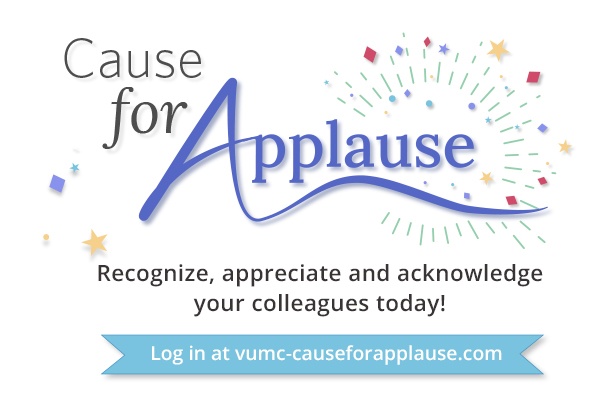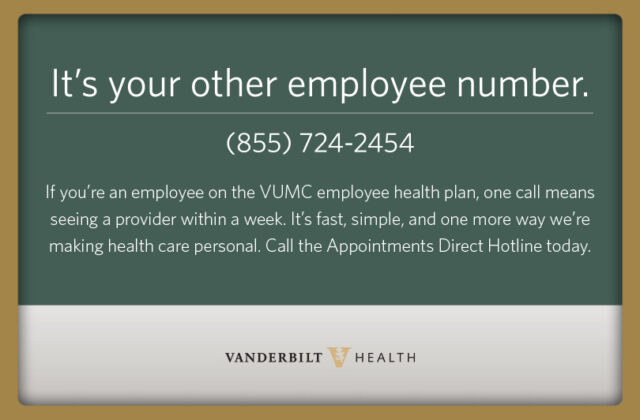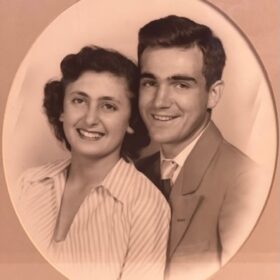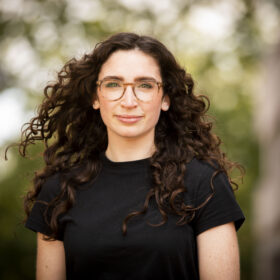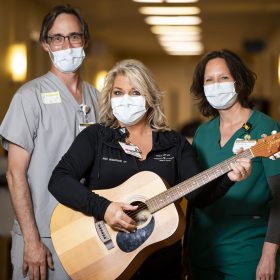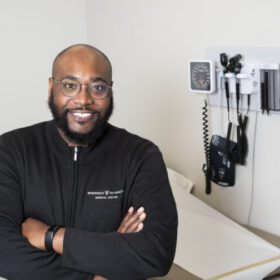Music therapy comes to Palliative Care Unit
“Music opens many new perspectives and pathways that patients otherwise would not have."
April 15, 2022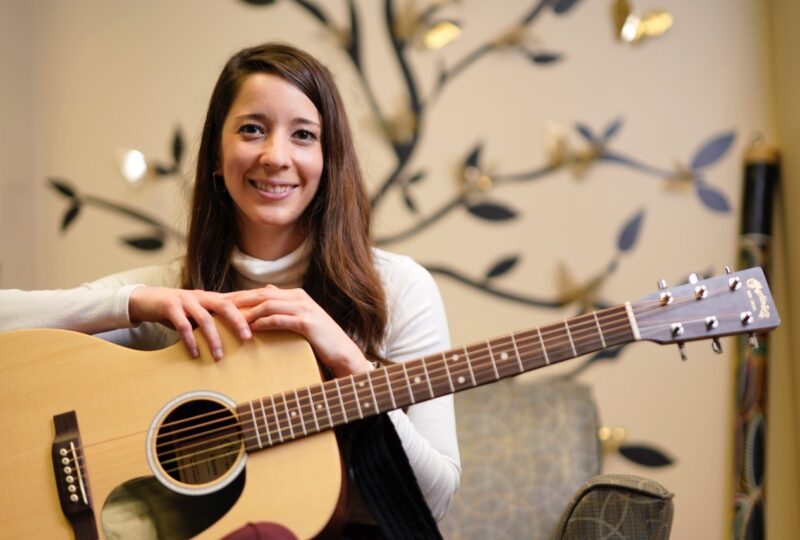
Cassandra Haines, board-certified music therapist. Photo by Donn Jones
Only two months after launching a music therapy program in Vanderbilt University Hospital’s (VUH) Palliative Care Unit, the benefits are already clear to Cassandra Haines and Andy Wooldridge, MD.
Haines, board-certified music therapist, and Wooldridge, assistant professor of Medicine, palliative care physician and director of the Department of Medicine Program for Arts and Humanities in Health Care.
“Music opens many new perspectives and pathways that patients otherwise would not have, had they not opened themselves to the experience of the music session,” Haines said. “Music allows the patient to explore safely and without judgment.”
Sessions often consist of songwriting and composition, listening to music, interactive instrumental and vocal exploration, and improvised music development.
Music therapy has a multitude of benefits, from improved mood and decreased anxiety to enhanced motor skills and better coping. These benefits are now available to palliative care patients thanks to Haines and Wooldridge.
Music therapy involves the evidence-based use of musical interventions through a therapeutic relationship with a board-certified music therapist. The therapist helps patients, families and caregivers achieve individualized clinical goals for a wide range of health conditions. Sessions often consist of songwriting and composition, listening to music, interactive instrumental and vocal exploration, and improvised music development.
As a board-certified music therapist, Haines completed a bachelor’s degree and a rigorous internship, which brought her 1,200 hours of direct clinical experience before sitting for her board exam. Her experience means she can rise to the many different needs of patients with serious illness seeking care at VUMC.
There are numerous interventions in a music therapist’s toolbox. Lyric analysis, an intervention Haines uses frequently, explores lyrics, melodies and rhythms to promote the patient’s sense of autonomy, memory and introspection. Patients tend to find connection and personal meaning through this intervention. Other common interventions include guided relaxation, guitar paced to the patient’s heart rate for relaxation, song dedications, musical life reviews, music and lyric collages, musical autobiography and family recordings.
A typical day in Haines’ life as a music therapist begins with a review of patient charts, followed by designing individualized treatment interventions. Then she begins her music therapy sessions, using instruments as the primary tools to help achieve patients’ goals. A wide range of instruments are used to support the needs and preferences of patients and caregivers, including guitar, keyboard, xylophone, chimes, harp and many others. After Haines sees her patients, she reviews updates with the caregiving staff and documents outcomes in the electronic health record.
Haines treats patients with a variety of serious illnesses including cancer, heart disease and traumatic injuries. In addition to physical symptoms, many of her patients are experiencing stress and anxiety. Throughout the therapeutic process, Haines’ interventions are assessed to address her patients’ unique needs, preferences and culture. This promotes inclusivity, respect for diverse backgrounds and experiences, and helps patients draw on their own sources of strength when facing vulnerable and challenging experiences.
“Helping patients cope with physical symptoms like pain and shortness of breath while also enabling them to express themselves and reduce anxiety is very important.”
A unique aspect of the palliative care music therapy program is an emphasis on legacy building for patients and their families. Recently, Haines was able to connect with a patient by recording the patient’s heartbeat and later adding guitar over the recorded rhythm of his heartbeat. She gave his family the finalized recording, which they were able to keep and play for comfort after the patient died.
“Helping patients cope with physical symptoms like pain and shortness of breath while also enabling them to express themselves and reduce anxiety is very important,” Wooldridge said. “A lot of our patients are seriously ill or near the end of life, and we’re able to do some great activities to bring some peace to them and their families.”
Wooldridge has been at Vanderbilt as an inpatient palliative care physician since 2014. He learned firsthand the value of combining art and medicine through an elective course he teaches to medical students and physicians called Healer’s Art, which emphasizes physician health and wellness through art. This experience inspired him to launch the palliative care music therapy program.
“I’m always trying to think of ways for our patients who are facing serious illness to cope and find new means to connect with their families,” Wooldridge said. “The overall vision of our music therapy program is to improve well-being at all levels through the arts.”
Since the music therapy program launched, Haines and Wooldridge have received positive feedback from patients and families and have collected data that shows high achievement of therapeutic outcomes.
Emma Rosenbaum, RN, BSN, is a clinical staff leader on the Palliative Care Unit who works closely with Haines to follow up with patients after music therapy consults and sessions.
“When I speak to patients about their sessions, their faces instantly light up,” Rosenbaum said. “Patients love sharing their stories and music interests and reflecting on their time with Cassandra. Her music therapy is so meaningful to them.”
The success of the VUH music therapy program has been amplified by strong support from Tom Elasy, MD, Ann and Roscoe R. Robinson Professor of Medicine and director of the Division of General Internal Medicine, and Kimryn Rathmell, MD, PhD, Hugh J. Morgan Professor and chair of the Department of Medicine. Elasy and Rathmell also serve as executive sponsors for the Department of Medicine Program for Arts and Humanities in Health Care.
“It’s been so rewarding to work with Dr. Wooldridge in developing a concept into a functioning program,” said Elasy. “Our hope is to enhance the well-being and experience of our patients during their hospital stay through personalized music therapy. The spread of this program across different areas will be uniquely designed to meet the personalized needs of our patients at VUMC.”




